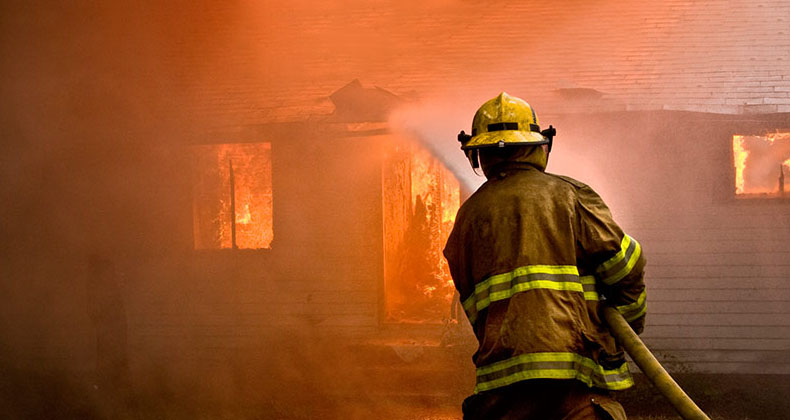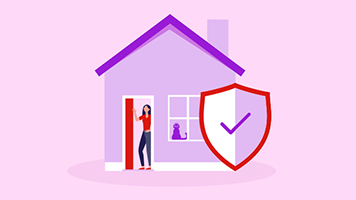Bushfire Preparation - Essential Guide
Bushfires are a fact of life in Australia. You should have a fire safety plan detailing what to do in a bushfire and discuss this with your family. Here are some other important steps.
Bushfires are a fact of life in Australia. You should have a fire safety plan detailing what to do in a bushfire and discuss this with your family. Here are some other important steps.
November 2023 – 6 minute read

As unpredictable as they can be, being prepared for what to do in a bushfire can go a long way to protecting you, your family, and your property. Making a conscious effort to think about fire safety can make all the difference to your safety. One of the first things to understand is fire danger ratings, such as low-moderate, extreme, and catastrophic, and what they mean. Use the ratings, and local emergency advice, as a trigger in deciding to stay or leave an area.
Don’t “wait and see” during a bushfire. If the day’s forecast is catastrophic or there is extreme fire danger your safest option is to leave early. Try and either leave very early in the morning or even before, at night when it’s cooler. It's important to follow local emergency advice when you're making a decision to stay or go. ABC local radio and fire and emergency services in your area can be a good source of information in a fast-changing event like a bushfire.
Everyone has a role in preparing for the warmer months and bushfire season. Whether you rent or own your home, here are some of the top things you can do to reduce the danger to you and your property.
It might be a chore but taking the time to keep your lawn mown can make all the difference. Make sure you also remove any cuttings as these can pose a fire risk as well.
Clear out any material from your garden that could cause a fire hazard – from wood piles, leaves and mulch through to door mats and even unused outdoor furniture. Remove combustible items that may be stored against your home or garage.
You should also remove dried undergrowth and grass from around and underneath your home, as this is one of the easiest ways for fire to spread. A clean yard reduces the likelihood of spot fires.
Leaves and twigs that have built up in your gutters put you at greater risk from flying embers. Make sure you keep your gutters cleaned out.
Take a good look at the trees around your home and on your property. Trim any overhanging branches that could make it easy for fire to spread to your home. You should also trim low hanging branches two metres from the ground that are close to your home.
If you have gas cylinders on your property, position them on the side of your house with the least trees and objects, and make sure that the pressure relief valves face outwards – this means the flame won’t be directed towards your house.
If you have any flammable fuels or chemicals on your property, store them in an enclosed shed. Ideally, they should be 20 metres away from your home, however if this isn’t possible, use pathways and gravel areas as fuel breaks. Gas cylinders should also be secured so they don’t fly off in high winds generated by fires.
Some simple things you can do to protect your home from ember attack and spot fires include:
Have at least one sturdy hose on your property that’s long enough to reach around your house and if you have a pool – or a tank or dam – put a Static Water Supply (SWS) sign at the entrance to your property. It is recommended that you have 10,000 litres of water for firefighting purposes as well as a firefighting pump and hoses.
Make sure your insurance is up-to-date well in advance, a 72 hour exclusion may apply*. Check the amount of cover you have (your 'sum-insured') is right for your circumstances. It’s also a good idea to make sure you have your insurer’s details handy and know how to contact them should you need to. If you have Westpac Home Insurance and you need to make a claim, you can lodge your claim online with Allianz 24/7.

Cover for your home and belongings, whether you're a homeowner, renter or landlord.
There is some bushfire preparation you can do early, especially around the garden and house (see more in this article). If you know you are going away on holidays to an area that may be prone to bushfire, understand the dangers and escape routes, where to go and who to keep in contact with for information on any situation that may come up – ABC local radio and fire and emergency services are important contacts.
It’s vital you are prepared and know what to do in a bushfire. It’s much harder to make decisions when a bushfire is heading towards you or your home.
Bushfires radiate heat and this radiant heat is a killer. You need to know how to minimise the danger with protective clothing and identifying places to shelter.
Talk with your family about your fire safety plan so everyone knows what they should do before and during an emergency. There are two options: staying and defending the property or leaving early and getting to safety. Talk about what each option means.
Establish your meeting spots and your escape routes. Your fire safety plan needs to cover leaving for a safer place (perhaps relocate with family or friends). Write a communications plan – who to call, where to go for information, how to keep in contact. Save your contacts in your mobile phone so everyone is ready when the time comes.
Have a Bushfire Preparation Guide, such as our Emergency Checklist downloaded and ready. Think about how you’ll make sure everyone, including pets, stay as safe as possible.
Here are some ways to prepare your property if you’re leaving;
If you and your family know and stick to the plan, you can avoid making potentially lethal last-minute decisions. A battery-operated radio so you can listen for information from ABC Local stations is helpful.
Here are some things to consider;
Ensure your Bushfire Preparation Guide is ready and activated. Make sure you can get to essential items such as protective clothing and water sources.
Ring your state's fire authority and ask for an assessment or advice. Fire agencies suggest that defending your home requires at least two able-bodied, fit and determined adults. You need to be physically and mentally prepared to work in difficult conditions for long hours.
Do not stay and defend your home if it's a catastrophic or code red fire danger rating day.
Check online guides supplied by rural fire services and state emergency services for detailed bushfire preparation lists. Make sure you have plenty of clean water for drinking and a water supply to fight the fire.
Some other equipment needed includes a fuel powered water pump and hoses, bucket, mop, shovel, torch and battery-powered radio.
Wear adequate protective clothing including natural fibre (cotton or wool or denim – no elastane) long sleeved shirts and pants; leather heavy soled boots; wide-brimmed hat; goggles and mask, such as a tea towel or better. Radiant heat is the biggest killer in a fire.
Find out if Westpac Home Insurance provided by Allianz, could be a good choice for your property and circumstances.
*72 hour exclusion period may apply. Allianz doesn’t provide cover for any loss of or damage to your property caused by cyclone, flood, grassfires and bushfires, during the first 72 hours after you first purchase a policy or increase your cover under an existing policy. For full details of conditions and exclusions please refer to the relevant PDS.
This information is general in nature and has been prepared without taking your objectives, needs and overall financial situation into account. The information is not advice, recommendation or opinion on any products or services provided by Westpac or third parties. For this reason, you should consider the appropriateness for the information to your own circumstances and, if necessary, seek appropriate professional advice. For more information on any specific products or services distributed or provided by Westpac, you may wish to read the relevant Product Disclosure Statement. To see some of the events covered and not covered, please refer to our Key Fact Sheets (KFS).
Home and Contents Insurance is issued by Allianz Australia Insurance Limited ABN 15 000 122 850 AFSL 234708 (Allianz). Westpac Banking Corporation ABN 33 007 457 141 AFSL 233714 (the Bank) arranges the initial issue of the insurance under a distribution agreement with Allianz, but does not guarantee the insurance. This information does not take into account your personal circumstances. Before making a decision, please consider the relevant Product Disclosure Statement. For more information call 1300 650 255.
If you take out Home and Contents with Allianz the Bank will receive a commission of up to 12% of the premium (exclusive of GST).
Where applicable, a Target Market Determination (TMD) has been created for these insurance products.